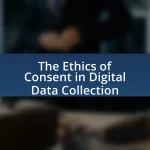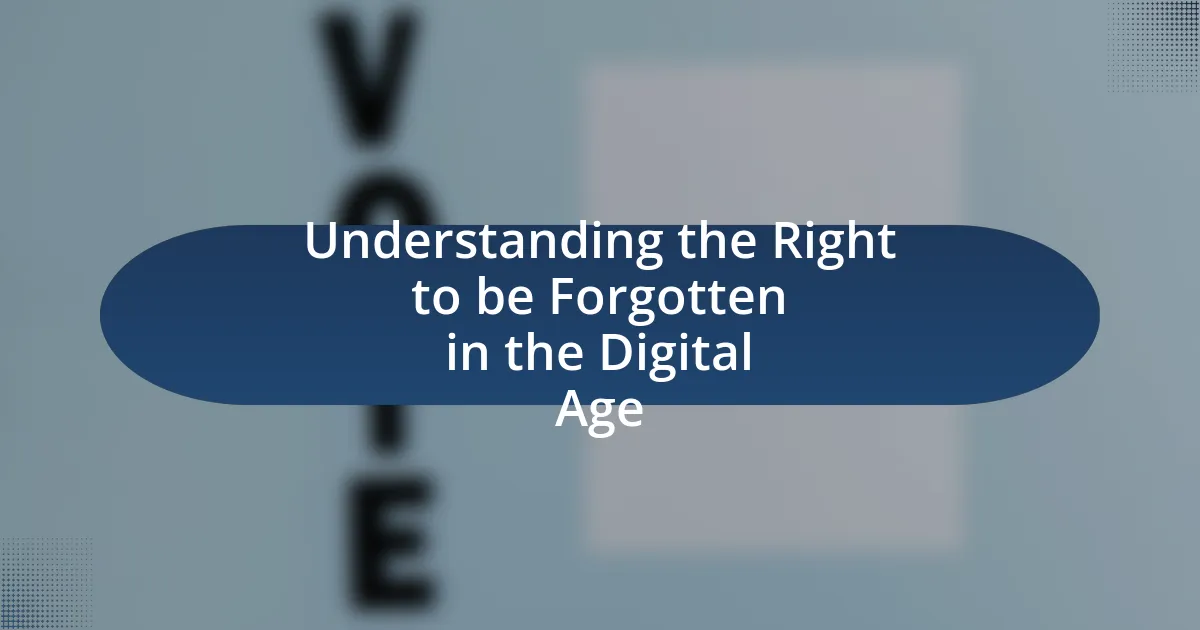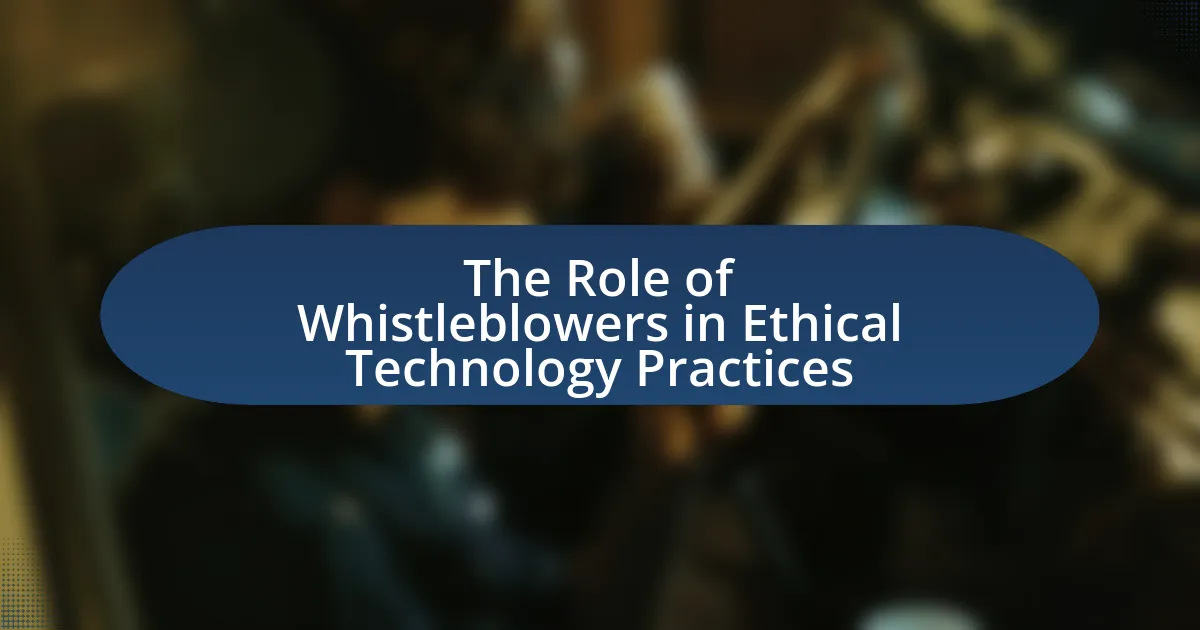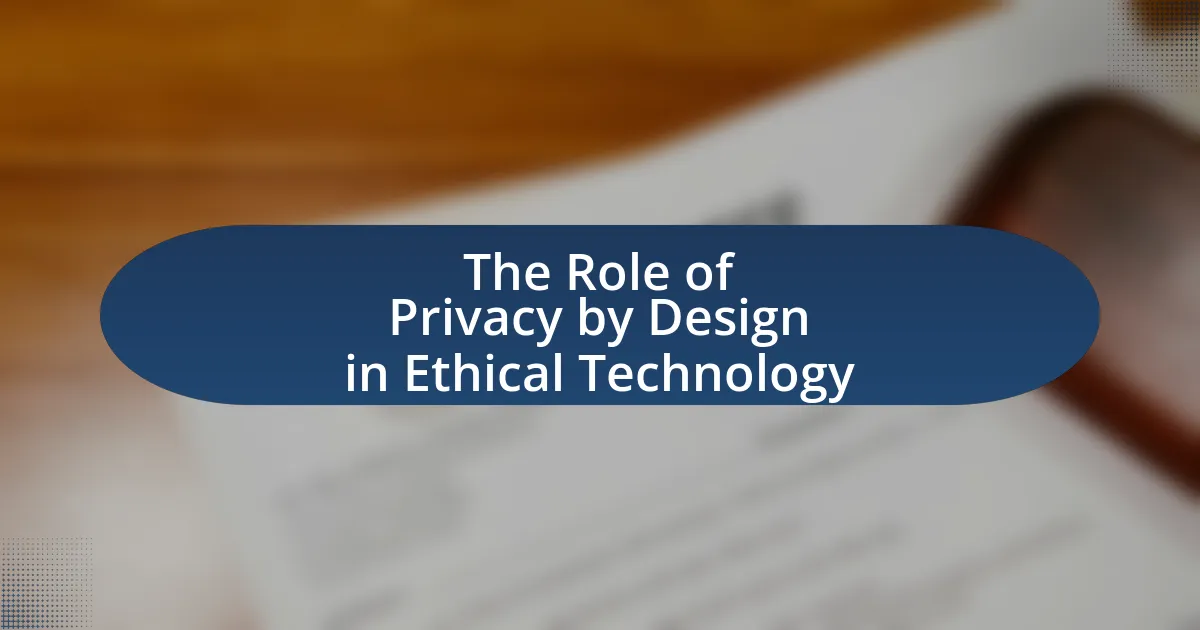The article focuses on privacy advocacy in the context of the Internet of Things (IoT), highlighting the key challenges such as data security, user consent, and regulatory compliance. It examines how the proliferation of IoT devices compromises user privacy by increasing data collection and vulnerability to breaches. The article also discusses the legal and regulatory landscape, ethical dilemmas, and the role of consumers and organizations in advocating for privacy rights. Proposed solutions for enhancing privacy protection include robust data encryption, transparent consent frameworks, and public awareness campaigns, while emerging technologies and evolving privacy laws are anticipated to shape future advocacy efforts.
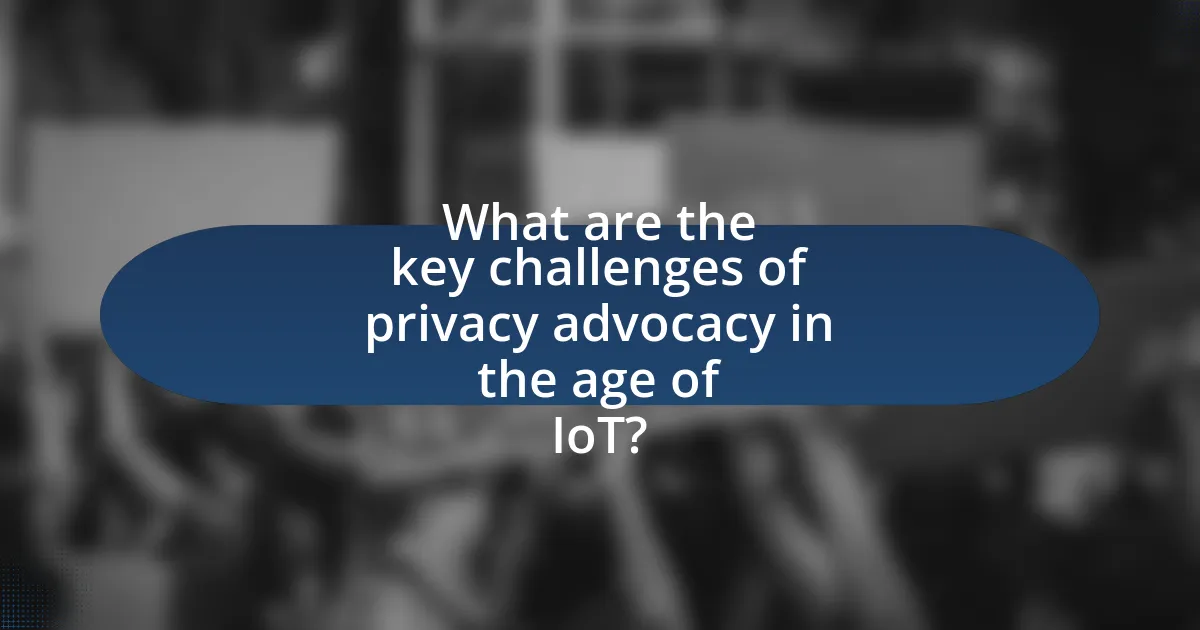
What are the key challenges of privacy advocacy in the age of IoT?
The key challenges of privacy advocacy in the age of IoT include data security, user consent, and regulatory compliance. Data security is compromised due to the vast amount of personal information collected by interconnected devices, making them attractive targets for cyberattacks; for instance, a 2021 report indicated that IoT devices were involved in 30% of all data breaches. User consent becomes problematic as many consumers are unaware of the extent of data collection and sharing practices, often agreeing to terms without fully understanding them. Regulatory compliance is challenging due to the rapid evolution of technology outpacing existing laws, leading to gaps in protection; the General Data Protection Regulation (GDPR) is one example of legislation attempting to address these issues, but enforcement remains inconsistent across jurisdictions.
How does the proliferation of IoT devices impact user privacy?
The proliferation of IoT devices significantly compromises user privacy by increasing the volume of personal data collected and shared. These devices often gather sensitive information, such as location, health metrics, and daily habits, which can be exploited by third parties without user consent. A study by the International Data Corporation (IDC) found that the number of connected IoT devices is expected to reach 41.6 billion by 2025, amplifying the risk of data breaches and unauthorized access. Furthermore, many IoT devices lack robust security measures, making them vulnerable to hacking, which can lead to further privacy violations.
What types of data are collected by IoT devices?
IoT devices collect various types of data, including environmental data (temperature, humidity, light levels), user interaction data (usage patterns, preferences), location data (GPS coordinates), and health data (heart rate, activity levels). These data types are essential for the functionality of IoT applications, enabling real-time monitoring and automation. For instance, smart thermostats gather temperature data to optimize heating and cooling, while wearable health devices track health metrics to provide insights into user wellness. The collection of such data raises significant privacy concerns, as it can lead to unauthorized access and misuse if not properly managed.
How do IoT devices compromise personal information security?
IoT devices compromise personal information security primarily through inadequate security measures and vulnerabilities in their design. Many IoT devices lack robust encryption, making it easier for hackers to intercept data transmitted over networks. For instance, a study by the Ponemon Institute found that 57% of organizations experienced a data breach due to insecure IoT devices. Additionally, default passwords and unpatched software create entry points for cybercriminals, further exposing personal data. The interconnected nature of IoT ecosystems amplifies these risks, as a breach in one device can lead to a cascade of security failures across multiple devices.
What legal and regulatory challenges exist for privacy advocacy?
Legal and regulatory challenges for privacy advocacy include inconsistent data protection laws across jurisdictions, which complicate compliance for organizations. For instance, the General Data Protection Regulation (GDPR) in Europe imposes strict requirements, while the United States lacks a comprehensive federal privacy law, leading to a patchwork of state regulations. Additionally, the rapid pace of technological advancement in the Internet of Things (IoT) outstrips existing legal frameworks, making it difficult for privacy advocates to address emerging threats effectively. Furthermore, enforcement mechanisms are often weak, and there is a lack of resources for regulatory bodies to monitor compliance, which undermines the effectiveness of privacy advocacy efforts.
How do current laws address privacy concerns in IoT?
Current laws address privacy concerns in IoT primarily through regulations that mandate data protection and user consent. For instance, the General Data Protection Regulation (GDPR) in the European Union requires companies to obtain explicit consent from users before collecting their personal data and mandates that users have the right to access and delete their data. Additionally, the California Consumer Privacy Act (CCPA) grants California residents rights regarding their personal information, including the right to know what data is collected and the right to opt-out of its sale. These laws aim to enhance transparency and accountability among IoT device manufacturers and service providers, ensuring that user privacy is prioritized in the design and operation of IoT systems.
What gaps exist in legislation regarding IoT privacy?
Gaps in legislation regarding IoT privacy include the lack of comprehensive regulations specifically addressing data collection, user consent, and security standards for IoT devices. Current laws often fail to keep pace with the rapid technological advancements in IoT, leading to insufficient protections for personal data. For instance, the General Data Protection Regulation (GDPR) in Europe does not explicitly cover all IoT scenarios, particularly in terms of real-time data processing and the complexities of device interconnectivity. Additionally, many jurisdictions lack specific guidelines on how companies should handle data breaches involving IoT devices, leaving consumers vulnerable. These legislative shortcomings highlight the urgent need for updated frameworks that can effectively address the unique privacy challenges posed by the Internet of Things.
What ethical dilemmas arise in IoT privacy advocacy?
Ethical dilemmas in IoT privacy advocacy primarily include the conflict between user privacy and the benefits of data collection. Advocates face challenges in balancing the need for innovation and convenience against the potential for surveillance and misuse of personal information. For instance, the collection of data from smart devices can enhance user experience but also raises concerns about consent and the extent of data usage. Additionally, there is the ethical issue of data ownership, where users may not fully understand who controls their data and how it is utilized. These dilemmas are underscored by incidents such as data breaches and misuse of personal information, highlighting the need for robust ethical frameworks in IoT privacy advocacy.
How do companies balance innovation with user privacy rights?
Companies balance innovation with user privacy rights by implementing robust data protection measures while fostering a culture of transparency. For instance, many organizations adopt privacy-by-design principles, integrating privacy considerations into the development of new technologies from the outset. This approach is supported by regulations such as the General Data Protection Regulation (GDPR), which mandates that companies prioritize user consent and data minimization. Additionally, companies often conduct regular privacy impact assessments to evaluate how new innovations may affect user privacy, ensuring compliance and building trust with consumers.
What role do consumers play in advocating for their privacy?
Consumers play a crucial role in advocating for their privacy by actively demanding transparency and control over their personal data. Their actions, such as participating in privacy-focused campaigns and supporting legislation like the General Data Protection Regulation (GDPR), demonstrate a collective push for stronger privacy protections. For instance, a survey by the Pew Research Center found that 79% of Americans are concerned about how their data is being used by companies, indicating a significant public interest in privacy advocacy. This consumer awareness and activism compel companies to adopt better privacy practices and influence policymakers to enact stricter regulations, thereby enhancing overall data protection in the digital landscape.
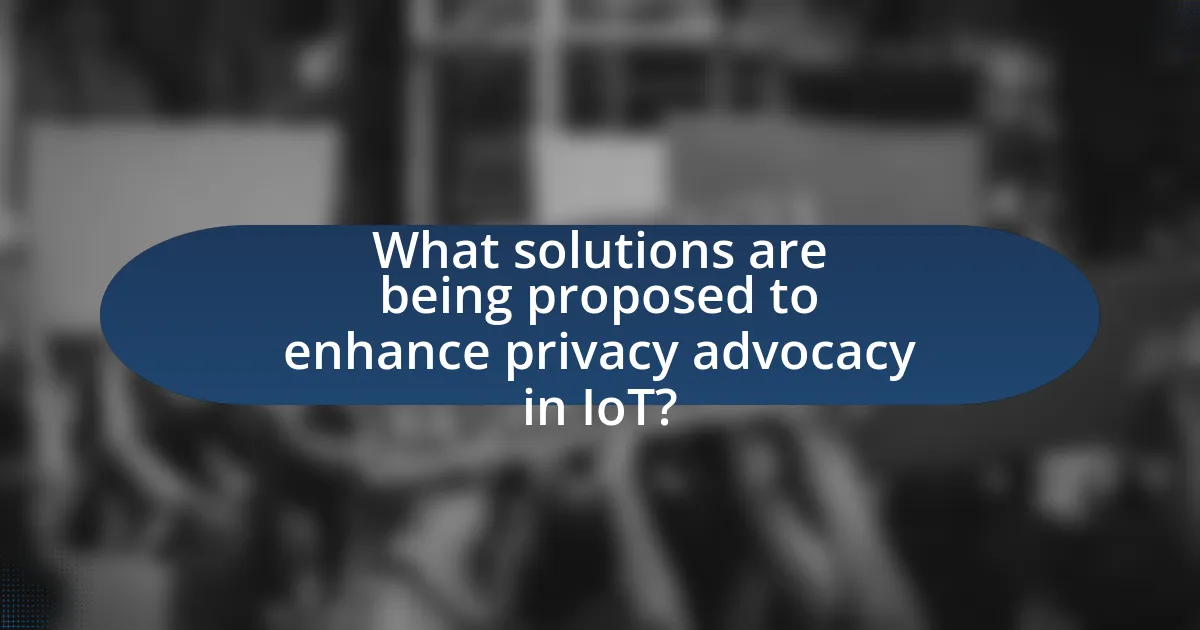
What solutions are being proposed to enhance privacy advocacy in IoT?
Proposed solutions to enhance privacy advocacy in IoT include implementing robust data encryption, establishing clear data governance frameworks, and promoting user-centric privacy policies. Data encryption ensures that personal information transmitted between devices remains secure, thereby reducing the risk of unauthorized access. Clear data governance frameworks, such as the General Data Protection Regulation (GDPR) in Europe, provide guidelines for data collection, usage, and sharing, ensuring that users have control over their personal information. Additionally, user-centric privacy policies encourage manufacturers to prioritize user consent and transparency, fostering trust and accountability in IoT ecosystems. These solutions collectively aim to address the privacy challenges posed by the increasing interconnectivity of devices.
How can technology improve privacy protection in IoT devices?
Technology can improve privacy protection in IoT devices through advanced encryption methods, secure data storage, and robust authentication protocols. For instance, end-to-end encryption ensures that data transmitted between devices is unreadable to unauthorized users, significantly reducing the risk of data breaches. Additionally, secure data storage solutions, such as decentralized storage systems, minimize the chances of centralized data leaks. Furthermore, implementing multi-factor authentication enhances access control, making it more difficult for unauthorized individuals to gain access to sensitive information. These technological advancements collectively contribute to a more secure IoT ecosystem, as evidenced by studies showing that devices employing these measures experience fewer security incidents.
What are the latest advancements in encryption for IoT?
The latest advancements in encryption for IoT include the development of lightweight cryptographic algorithms, such as the Advanced Encryption Standard (AES) and Elliptic Curve Cryptography (ECC), which are optimized for resource-constrained devices. These algorithms enhance security while minimizing computational overhead, making them suitable for IoT applications. Additionally, the integration of quantum-resistant encryption methods is gaining traction, addressing potential vulnerabilities posed by quantum computing. Research from the National Institute of Standards and Technology (NIST) emphasizes the importance of these advancements in securing IoT ecosystems against evolving threats.
How can user consent be better managed in IoT ecosystems?
User consent in IoT ecosystems can be better managed through the implementation of transparent consent frameworks that allow users to easily understand and control their data sharing preferences. These frameworks should include clear, concise language and visual aids to explain data usage, enabling users to make informed decisions. Research indicates that 79% of consumers express concern over how their data is used, highlighting the need for improved consent management practices. Additionally, employing automated consent management tools can streamline the process, ensuring that user preferences are consistently respected across devices and applications.
What role do organizations and advocacy groups play in privacy advocacy?
Organizations and advocacy groups play a crucial role in privacy advocacy by raising awareness, influencing policy, and providing resources for individuals and communities. These entities mobilize public opinion and engage in lobbying efforts to shape legislation that protects personal data and privacy rights. For instance, the Electronic Frontier Foundation (EFF) actively campaigns for digital privacy rights and has successfully influenced laws such as the California Consumer Privacy Act (CCPA). Additionally, organizations like the American Civil Liberties Union (ACLU) provide legal support and education on privacy issues, empowering citizens to understand and assert their rights. Through these actions, advocacy groups significantly contribute to the ongoing dialogue about privacy in the context of rapidly evolving technologies.
How can public awareness campaigns influence IoT privacy practices?
Public awareness campaigns can significantly influence IoT privacy practices by educating consumers about potential risks and encouraging them to demand better privacy protections from manufacturers. These campaigns raise awareness of data collection practices, security vulnerabilities, and the importance of user consent, leading to increased public scrutiny of IoT devices. For instance, a study by the Pew Research Center found that 81% of Americans feel they have little control over the data collected by companies, highlighting the need for informed consumer advocacy. As consumers become more knowledgeable, they are more likely to support regulations and practices that prioritize privacy, prompting companies to adopt stronger privacy measures to meet consumer expectations.
What partnerships are essential for effective privacy advocacy?
Effective privacy advocacy relies on partnerships between civil society organizations, technology companies, and government agencies. Civil society organizations, such as privacy advocacy groups, provide expertise and grassroots support, while technology companies can implement privacy-by-design principles and share best practices. Government agencies play a crucial role in creating and enforcing regulations that protect consumer privacy. For instance, the collaboration between the Electronic Frontier Foundation and tech firms has led to significant advancements in privacy rights, demonstrating the importance of these partnerships in shaping effective privacy advocacy.
What best practices can individuals adopt to protect their privacy?
Individuals can adopt several best practices to protect their privacy, including using strong, unique passwords for different accounts, enabling two-factor authentication, and regularly updating software and devices. Strong passwords reduce the risk of unauthorized access, while two-factor authentication adds an additional layer of security, making it harder for attackers to gain entry. Regular updates patch vulnerabilities that could be exploited by malicious actors. According to a 2021 report by the Cybersecurity & Infrastructure Security Agency, 85% of data breaches involve weak or stolen passwords, highlighting the importance of these practices in safeguarding personal information.
How can users secure their IoT devices effectively?
Users can secure their IoT devices effectively by implementing strong, unique passwords for each device and regularly updating firmware. Strong passwords reduce the risk of unauthorized access, while firmware updates often include security patches that protect against vulnerabilities. According to a 2021 report by the Cybersecurity & Infrastructure Security Agency (CISA), 85% of IoT device breaches occur due to weak or default passwords. Additionally, users should enable network encryption and utilize firewalls to further safeguard their devices from external threats.
What tools are available for monitoring privacy settings in IoT?
Tools available for monitoring privacy settings in IoT include IoT security platforms, network monitoring tools, and privacy management software. IoT security platforms like Armis and Zingbox provide visibility into connected devices and their data usage, enabling users to assess privacy settings effectively. Network monitoring tools such as Wireshark allow for the analysis of data packets, helping identify potential privacy breaches. Privacy management software, including OneTrust and TrustArc, assists organizations in managing compliance with privacy regulations and monitoring data handling practices across IoT devices. These tools collectively enhance the ability to monitor and manage privacy settings in the IoT landscape.
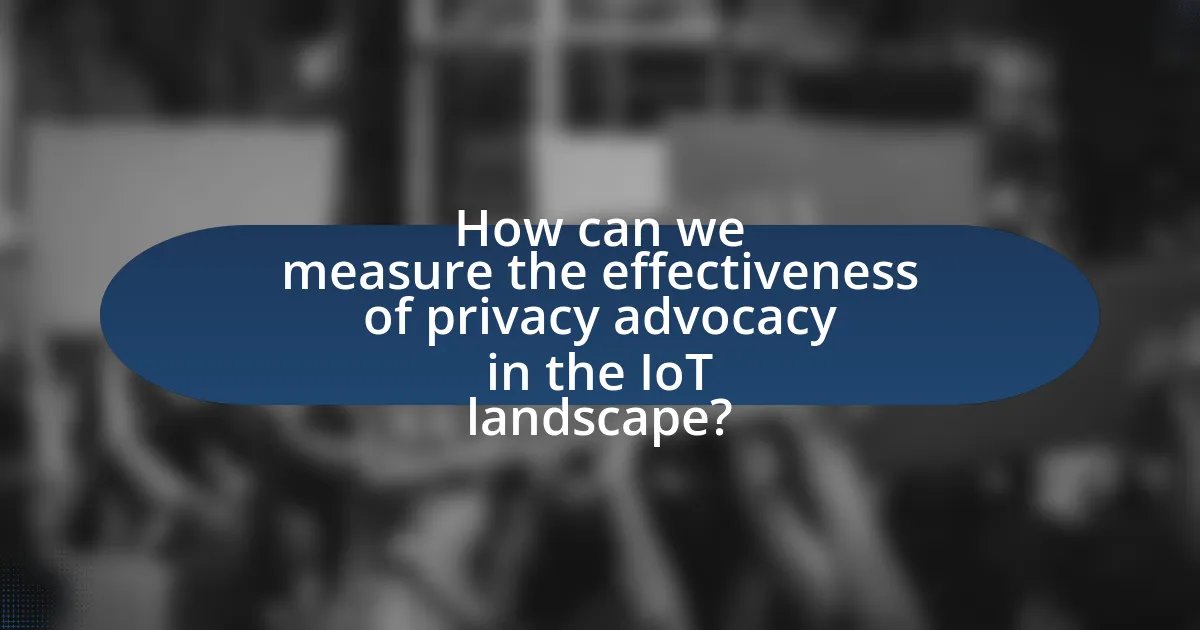
How can we measure the effectiveness of privacy advocacy in the IoT landscape?
The effectiveness of privacy advocacy in the IoT landscape can be measured through metrics such as public awareness, policy changes, and compliance rates. Public awareness can be assessed by surveys indicating the level of understanding consumers have regarding IoT privacy issues, with studies showing that informed consumers are more likely to demand better privacy protections. Policy changes can be tracked by analyzing the introduction and implementation of regulations like the General Data Protection Regulation (GDPR), which has led to increased accountability among IoT manufacturers. Compliance rates can be evaluated by examining the percentage of IoT devices that meet established privacy standards, with reports indicating that adherence to privacy guidelines correlates with reduced data breaches and enhanced user trust.
What metrics can be used to assess privacy protection in IoT?
Metrics that can be used to assess privacy protection in IoT include data minimization, user consent management, encryption strength, and access control effectiveness. Data minimization evaluates the extent to which IoT devices collect only necessary information, thereby reducing exposure to privacy risks. User consent management measures how effectively users are informed and can control their data sharing preferences. Encryption strength assesses the robustness of data protection mechanisms employed by IoT devices, while access control effectiveness examines the adequacy of measures in place to restrict unauthorized access to sensitive information. These metrics are essential for ensuring that privacy standards are upheld in the rapidly evolving landscape of IoT technology.
How do user feedback and surveys contribute to understanding privacy concerns?
User feedback and surveys are essential tools for identifying and understanding privacy concerns among individuals. They provide direct insights into user perceptions, preferences, and anxieties regarding data handling practices. For instance, a survey conducted by the Pew Research Center in 2021 revealed that 79% of Americans expressed concern about how their data is being used by companies, highlighting a widespread apprehension that can be quantitatively assessed through such feedback mechanisms. This data allows organizations to pinpoint specific areas of concern, such as data security, consent, and transparency, enabling them to address these issues more effectively. By analyzing trends in user responses, companies can adapt their privacy policies and practices to align with user expectations, ultimately fostering trust and compliance in an increasingly data-driven environment.
What role does compliance with regulations play in measuring effectiveness?
Compliance with regulations is crucial in measuring effectiveness as it establishes a benchmark for evaluating organizational practices and outcomes. Adhering to regulations ensures that privacy standards are met, which is essential for maintaining consumer trust and safeguarding sensitive data. For instance, the General Data Protection Regulation (GDPR) mandates specific data protection measures, and organizations that comply can demonstrate their commitment to privacy, thereby enhancing their effectiveness in managing data responsibly. This compliance not only mitigates legal risks but also provides measurable criteria against which the success of privacy initiatives can be assessed, reinforcing the importance of regulatory adherence in the context of privacy advocacy in the Internet of Things (IoT).
What future trends should privacy advocates be aware of in IoT?
Privacy advocates should be aware of the increasing integration of artificial intelligence in IoT devices, which raises significant privacy concerns. As AI capabilities expand, devices will collect and analyze more personal data, leading to potential misuse or unauthorized access. Additionally, the trend towards edge computing will shift data processing closer to the source, enhancing efficiency but complicating data governance and privacy protections. Furthermore, the rise of regulatory frameworks, such as the General Data Protection Regulation (GDPR) in Europe, will influence how companies manage user data, necessitating that privacy advocates stay informed about compliance requirements and their implications for consumer rights.
How might emerging technologies impact privacy advocacy?
Emerging technologies significantly impact privacy advocacy by introducing new challenges and opportunities for protecting personal data. For instance, advancements in artificial intelligence and machine learning enable more sophisticated data collection and analysis, which can lead to increased surveillance and potential misuse of personal information. According to a report by the Electronic Frontier Foundation, the proliferation of Internet of Things devices has resulted in a dramatic rise in data generation, complicating the landscape for privacy advocates who seek to establish regulations and standards for data protection. Additionally, blockchain technology offers potential solutions for enhancing privacy through decentralized data management, allowing individuals greater control over their personal information. Thus, while emerging technologies pose risks to privacy, they also provide tools that privacy advocates can leverage to promote stronger protections.
What predictions can be made about the evolution of privacy laws in relation to IoT?
Predictions about the evolution of privacy laws in relation to IoT indicate an increase in regulatory frameworks aimed at protecting consumer data. As IoT devices proliferate, governments are likely to implement stricter regulations to address privacy concerns, similar to the General Data Protection Regulation (GDPR) enacted in the European Union. This trend is supported by the growing number of data breaches and public demand for enhanced privacy protections, evidenced by surveys showing that over 70% of consumers are concerned about their data privacy in relation to IoT devices. Additionally, industry stakeholders are advocating for clearer guidelines, which may lead to the establishment of comprehensive privacy standards that specifically address the unique challenges posed by IoT technology.
What practical steps can individuals take to advocate for their privacy rights?
Individuals can advocate for their privacy rights by educating themselves about privacy laws and regulations, such as the General Data Protection Regulation (GDPR) and the California Consumer Privacy Act (CCPA). Understanding these laws empowers individuals to recognize their rights regarding data collection and usage. Additionally, individuals should utilize privacy tools like Virtual Private Networks (VPNs) and encrypted messaging apps to protect their personal information. Engaging in community discussions and supporting organizations that focus on digital rights, such as the Electronic Frontier Foundation (EFF), can amplify their voices. Furthermore, individuals can participate in public consultations and provide feedback on proposed legislation affecting privacy rights, ensuring their concerns are heard. These steps collectively enhance individual advocacy for privacy rights in an increasingly connected world.

